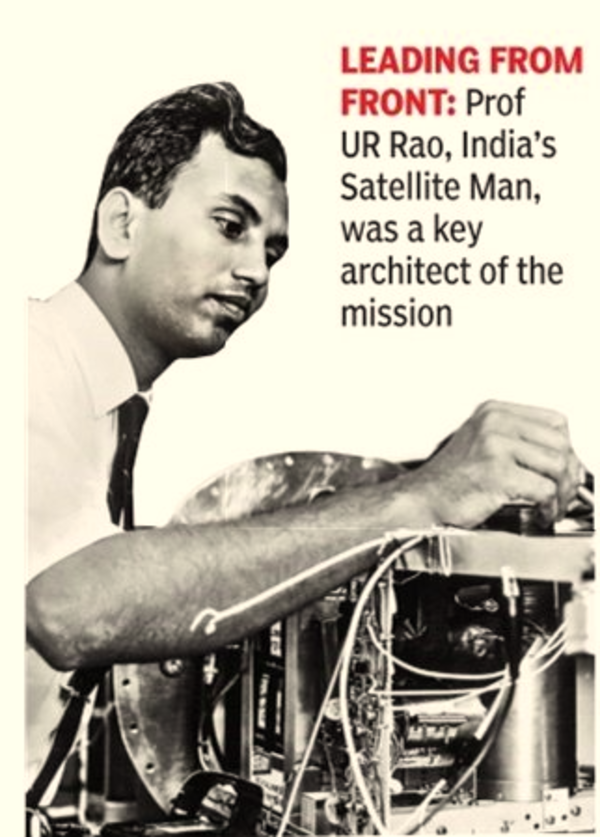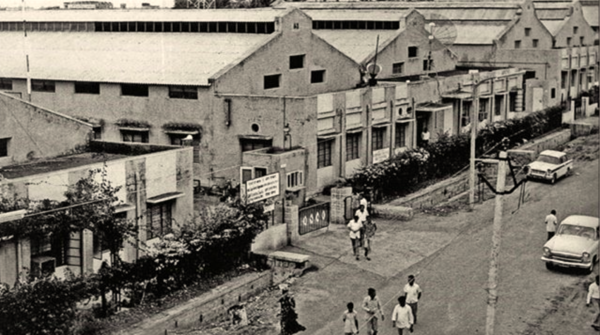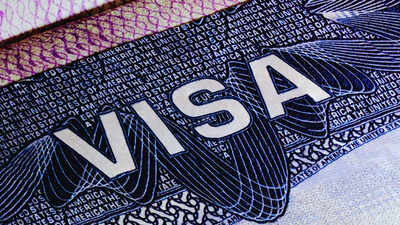It was Saturday, April 19, 1975. At 1:28:55pm IST, India launched its first satellite, Aryabhata, from a remote Soviet cosmodrome. Built in just 30 months by a young team of Indian scientists, the satellite didn’t just mark the beginning of India’s space era — it became a symbol of scientific ambition in a developing nation.
While Aryabhata fell silent just four days after launch due to a power failure, it achieved much more than expected. It demonstrated India’s ability to design and build a satellite from scratch, a satellite that would conduct experiments in X-ray astronomy, solar physics, and aeronomy (see box). The mission was India’s first step in using satellites for scientific discovery, not just communications.
Aryabhata’s project director, Udupi Ramachandra Rao, who passed away in 2017, used to talk about that chilly morning in Russia, when the satellite was launched. Everything had been meticulously prepared for this moment, with Indian scientists working tirelessly for 40 days in Russia. Every little detail had been taken care of.

As the countdown progressed at Kapustin Yar Cosmodrome, the Indian team heard someone shout ‘Payyakali’, a Russian expression meaning ‘let us go’. (Yuri Gagarin, before taking off on the world’s first manned space flight, had said it.) And then the Indian team saw their 358kg satellite soaring aboard the Kosmos-3M rocket. At that moment, India joined an elite space-faring club.
How it all began
In 1971, as India toyed with the idea of building a 100kg scientific satellite compatible with a Scout rocket, PM Indira Gandhi forwarded Vikram Sarabhai a letter from DP Dhar, the Indian ambassador in Moscow. The Soviets were open to assisting India in space projects. Sarabhai swiftly arranged a meeting with Soviet ambassador Nikolai Pegov. UR Rao was asked to present India’s case.

“After patiently hearing me for 30 minutes, the ambassador asked about the weight of China’s first satellite. When I said around 190kg, he insisted India’s must be heavier — and said the USSR would launch it, whatever the weight,” Rao later recounted.
Sarabhai’s sudden demise in a plane crash in Dec 1971 didn’t stall progress. Under Prof MGK Menon — a renowned cosmic-ray physicist holding interim charge of Isro — a joint meeting with Soviet experts to finalise the Indo-Soviet space cooperation was held in Thiruvananthapuram in Feb 1972.

Rao assembled a core team — SP Kosta, K Kasturirangan, R Ashiya, and Tarsem Singh. But first they had to figure out how much it would cost. Rao did the maths: it would cost Rs 3 crore, Rs 1 crore of which would be in foreign exchange. He relayed the figure to Gandhi.
“Go ahead and sign the agreement,” she said. On May 10, 1972, a historic Indo-Soviet agreement was signed between M Keldysh, president of the USSR Academy of Sciences, and Menon. It outlinedthe launch of India’s first satellite — yet unnamed — from a Soviet cosmodrome. VM Kovtunenko was appointed Soviet project director; Rao led the Indian side.
Tin sheds in Peenya
The next question was where to build the satellite? Bangalore or Hyderabad? Bangalore won. With help from Karnataka’s industries secretary Satish Chandran, Rao secured four bare industrial sheds — 5,000 sqft each — in the then-nascent Peenya Industrial Estate.
These sheds were transformed at astonishing speed. Two became specialised control electronics labs, including a 1,500-sqft clean room for satellite integration. On Ganesh Chaturthi, Sept 11, 1972, they were informally inaugurated.
A handful of scientists grew into a 150-strong team working round the clock. But procurementwas a major hurdle. Undeterred, Isro formed a special procurement team led by Rao, with TN Seshan and YS Rajan. They travelled across Europe and the US, placing spot orders and bypassing red tape to secure equipment affordably — and fast.
On July 11, 1974, PM Gandhi visited Peenya. As she looked into the clean room where Aryabhata’s flight model was being finalised, her face lit up with quiet pride. This wasn’t just a machine — it was India’s boldest declaration of scientific intent.
Jawahar? Maitri? Or Aryabhata?
At the final project board meeting in March 1975 — just a month before launch — the team discussed names for the satellite. The options: Aryabhata (after the ancient Indian astronomer), Jawahar (after Pandit Nehru), and Maitri (for Indo-Soviet friendship).
“As expected, Mrs Gandhi picked Aryabhata,” Rao recalled. A special stamp was planned to mark the launch.
What Aryabhata achieved
The quasi-spherical satellite measured 1.59m across and weighed 358kg. Its 26-faced polyhedron structure was covered with solar cells generating 46W, supported by a Ni-Cd battery. It employed passive thermal systems and cold gas jets for spin stabilisation, demonstrating sophisticated engineering. A notable feature was its data handling capability.
With its launch into an LEO orbit — 50.7° inclination, 619km apogee, 568km perigee — Aryabhata established a foundation for future satellites. All on-board systems functioned perfectly until the satellite experienced tumbling at 0.3° per second instead of maintaining a stable spin, and the aeronomy instrument’s power supply failed. However, engineers stabilised the satellite at 50 revolutions/minute by the 45th orbit. But in five days, it went silent though its mainframe remained active until March 1981 and the satellite itself remained in orbit until its atmospheric re-entry on Feb 10, 1992.
Despite power issues affecting scientific experiments, initial data yielded significant discoveries. The X-ray instrument measured intensity from the complex “CygX1” source. Several other technological experiments relevant to future programmes were successfully conducted, including satellite tracking using tone ranging, voice and data communication between USSR and Bangalore, telemedicine experiments connecting remote rural areas with city hospitals, and meteorological data transmission as a precursor to later data relay experiments on Insat.
Aryabhata’s most significant impact was establishing a firm foundation in satellite technology, creating a confident core team for building more complex operational satellites, and developing infrastructure for India’s future satellite programme.




















